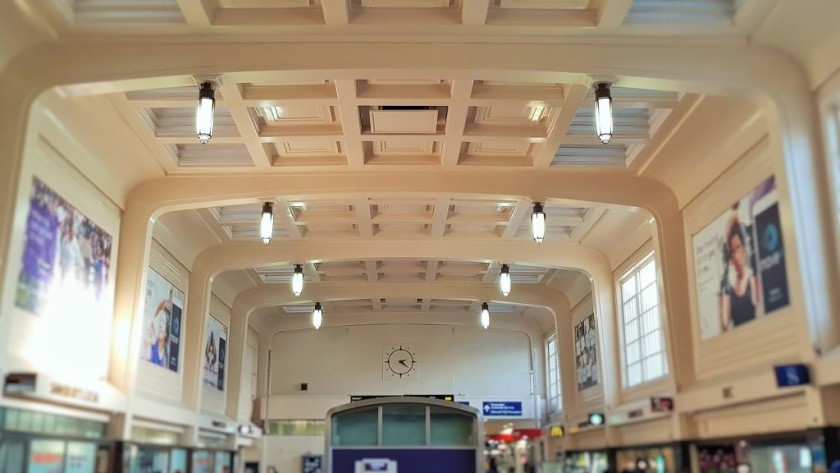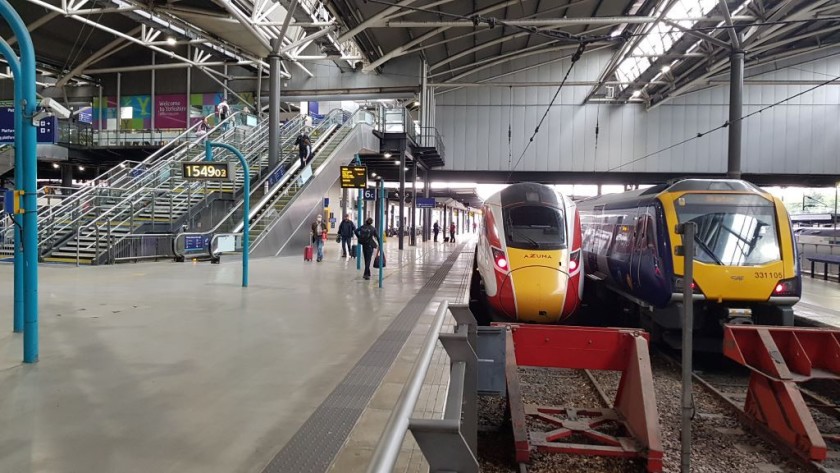Related Content
Content
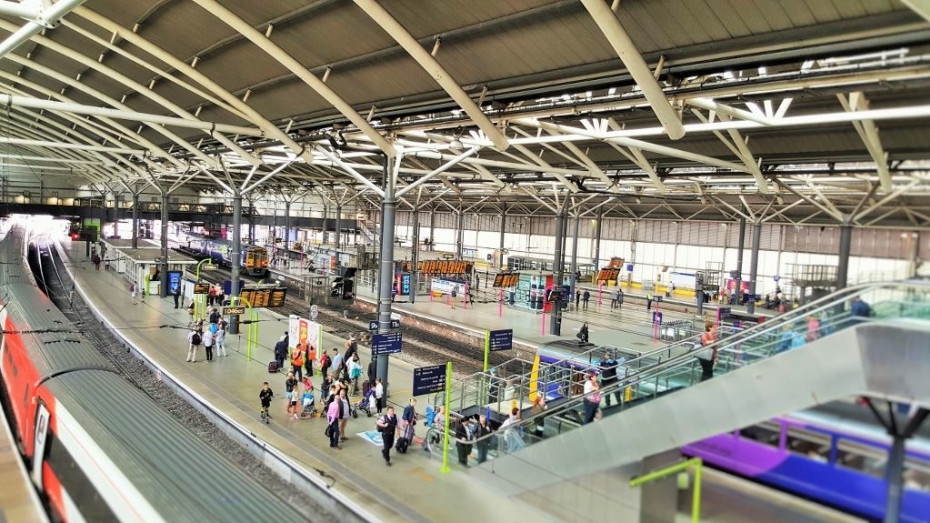
Leeds City (Leeds)
Welcome to the guide to taking trains to and from the busiest station in northern England.
Share
At a Glance
Services
Left Luggage
Travel Information Desk
First Class Lounge
Accessibility
Step Free
Onward Travel
Car Hire
Taxi Rank
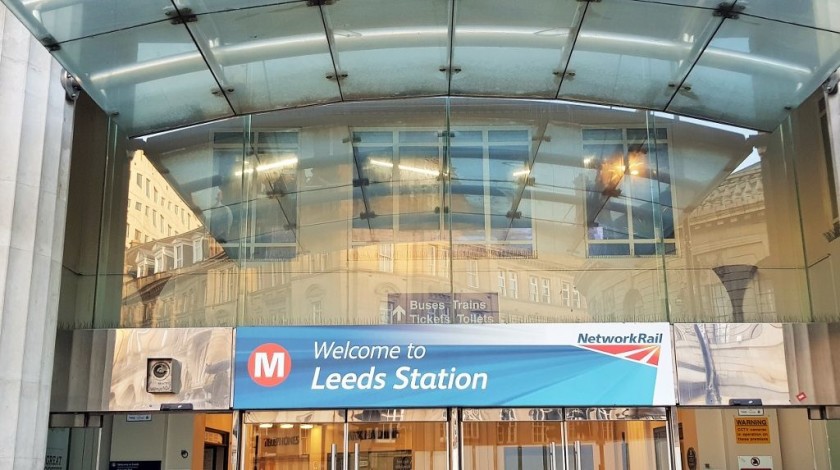
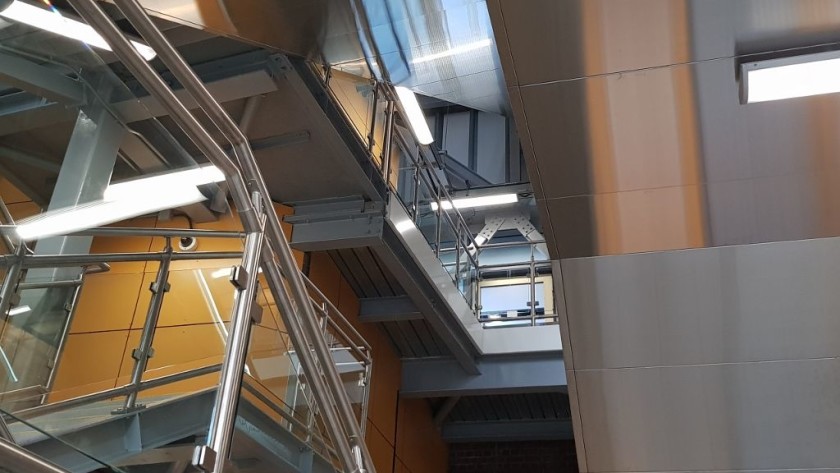
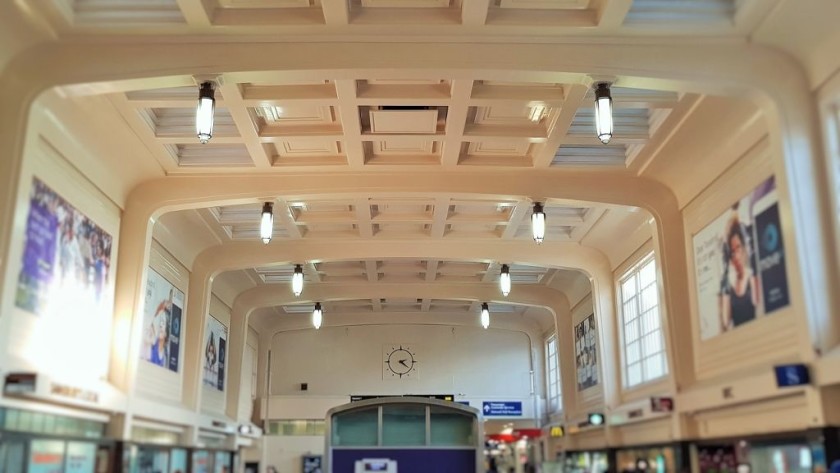
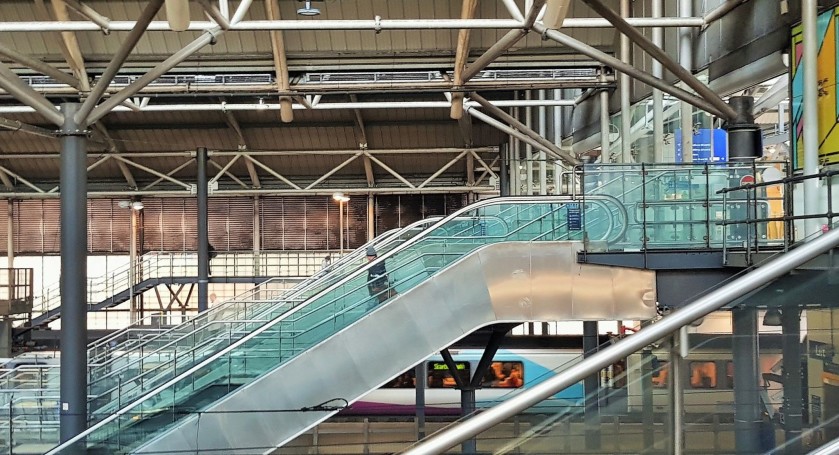
Leeds City is the busiest station in Northern England, so it’s a constantly hectic space that’s arguably too small for the number of people and trains which now use it.
To accommodate all the trains which depart from the station, many of its 17 platforms (tracks) been subdivided into up to four sections ‘A’, ‘B’, ‘C’ and ‘D’ with many trains only using these specific parts of each platform.
Also each of these specific platforms (tracks) usually has multiple departures per hour.
So when taking a train from Leeds, you will usually have to pay close attention to which specific platform (track) your train will be leaving from, 9A is not the same as 9D etc.
Though some longer trains will occupy the entire length of the platform, so if only a number is used on the departure screens you can wait anywhere along the length of that platform to board a train.
The three sets of platforms/tracks:
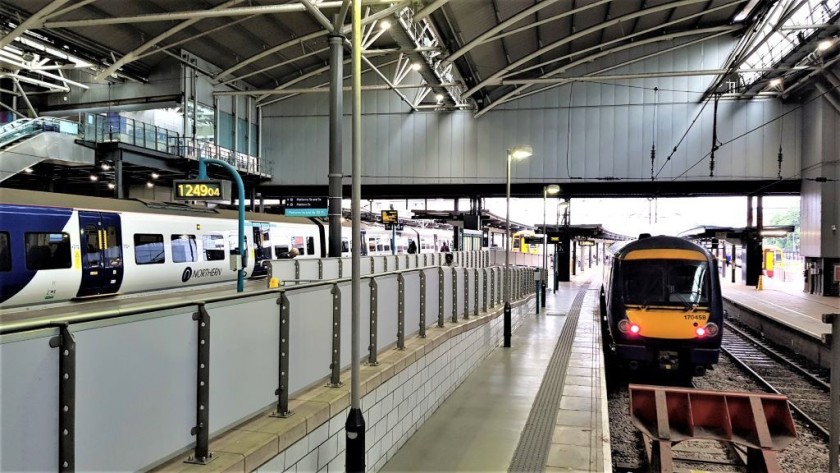
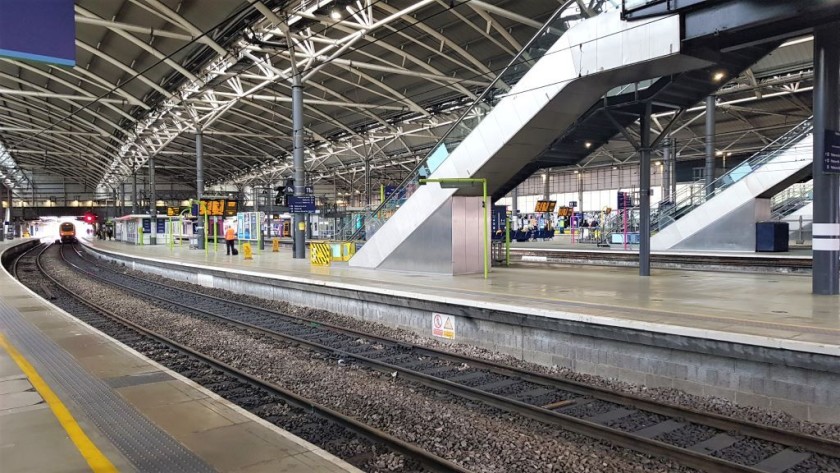
The part of the Leeds City which the trains use is in three distinct parts - all of which can be accessed by using the same ticket gate line, which separates the main station building from the platforms (tracks).
Platforms (tracks) 1 -6:
This part of the station is a terminus so it’s on the same level as the main concourse, though platforms 3 and 4 are more distant from the ticket gates.
The 'C' sections of these platforms are nearest to the concourse, but the A sections are furthest from the ticket gates.
This part of the station is usually used by these six Northern train services:
(1) to/from Bradford including trains which continue beyond Bradford to Chester and Manchester via Hebden Bridge and Halifax.
(2) the Wharfedale trains to/from Ilkley
(3) the Airedale line trains to/from Skipton via Keighley - for the Keighley & Worth Valley Railway; and Saltaire - for Saltaire Mills
(4) the Harrogate Line trains
(5) the trains to Carlisle on the spectacular route via Hellifield and Settle
(6) the trains to Lancaster via Hellifield and Carnforth
Platforms (tracks) 7 and 8:
Platform 8 is right by the ticket gate line, so it is beside the main concourse; and platform 7 is at its far end, so the access to and from the trains which use these platforms is step-free
Platform 8 is usually used by the LNER trains to and from London.
Platforms (tracks) 9 -17:
The dominant feature of Leeds station is the huge bridge which connects these platforms to the ticket gate line, by the main concourse.
Both the concourse and each of these platforms (tracks) are connected to this bridge by escalators and lifts (elevators) - and there are also stairs available.
The long distance trains which use these platforms include:
- the Cross Country trains to multiple destinations including Birmingham, Bristol, Derby, Edinburgh, Durham, Newcastle. Sheffield and York
- the Trans Pennine Express trains to multiple destinations including Durham, Hull, Liverpool, Manchester (faster than the Northern trains), Newcastle, Scarborough and York.
Good to know:
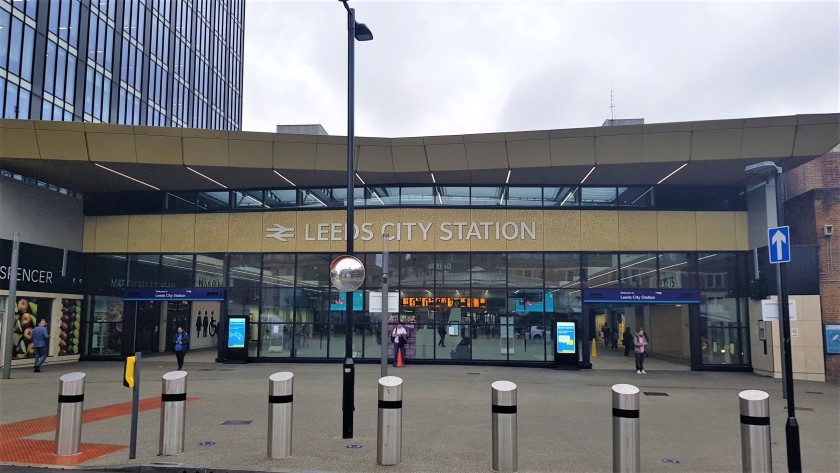
The main station in Yorkshire's largest city has something of a duel identity.
It's historic name of 'Leeds City', which was used when Leeds was served by more than station used by long-distance trains, is still used by Network Rail - Hence the comparatively recent addition of a new main entrance, is topped off by a name of 'Leeds City Station'.
However, the station name signs on the platforms / tracks simply read 'Leeds' - hence on board announcements, timetables and booking services tend to use only 'Leeds'.
So what's good to know is that 'Leeds' and 'Leeds City' are the same station.
Book Accommodation
When planning a trip, finding convenient accommodation can be trickier than working out which train to take.
Hence ShowMeTheJourney has partnered with the innovative accommodation portal, Stay 22, to offer three options for discovering your optimum accommodation:
1: Use the map above to see which hotel rooms and Vrbo rentals, with easy access to Leeds City station, are available.
2: Or click on these cherry-picked properties, offered by Stay 22 partner Booking.com, which are by Leeds City station and have been selected on the basis of high guest ratings:
Holiday Inn Liverpool City Centre
3: Or see what's available with Stay 22's accommodation partners; which include, Expedia, Hotels.com and Trivago - by clicking the large button below.
Stay 22 will 'shuffle' the booking services so that you can be automatically directed to its partner that currently has the optimum availability at this location.
Arriving by train:
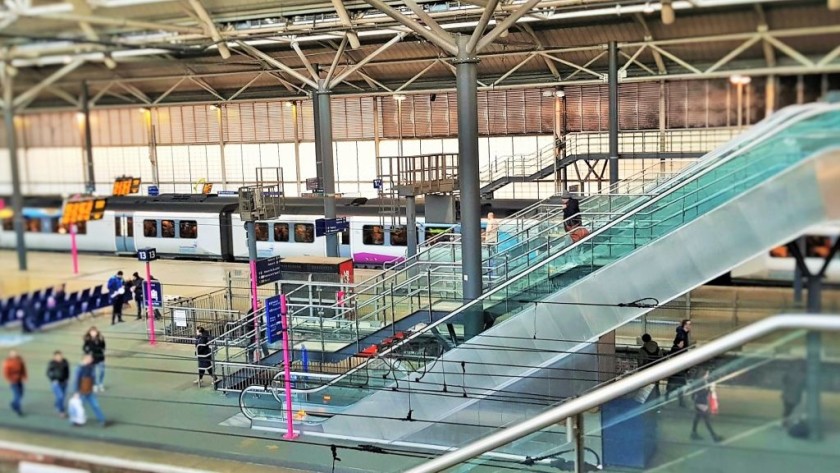
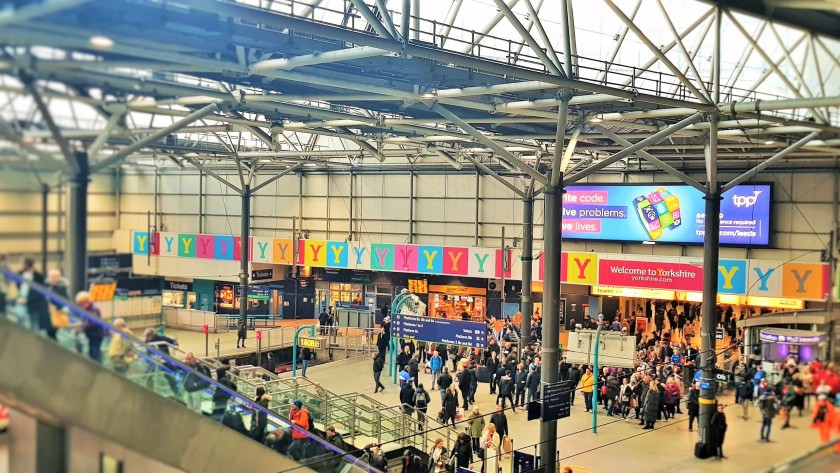
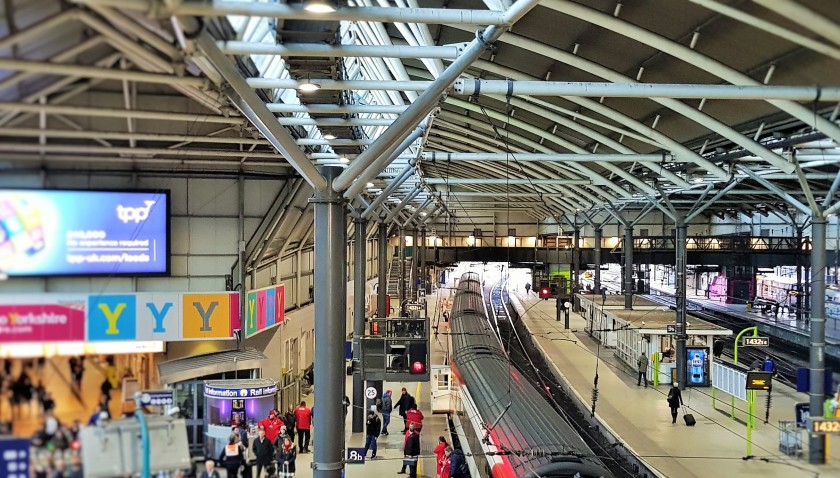
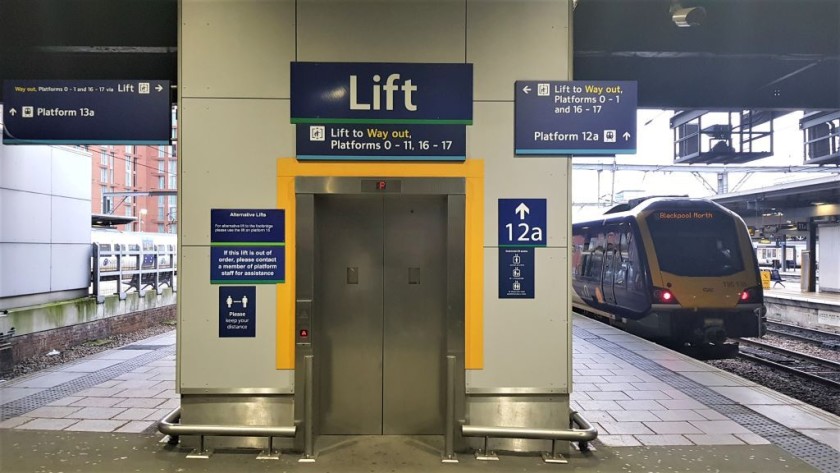
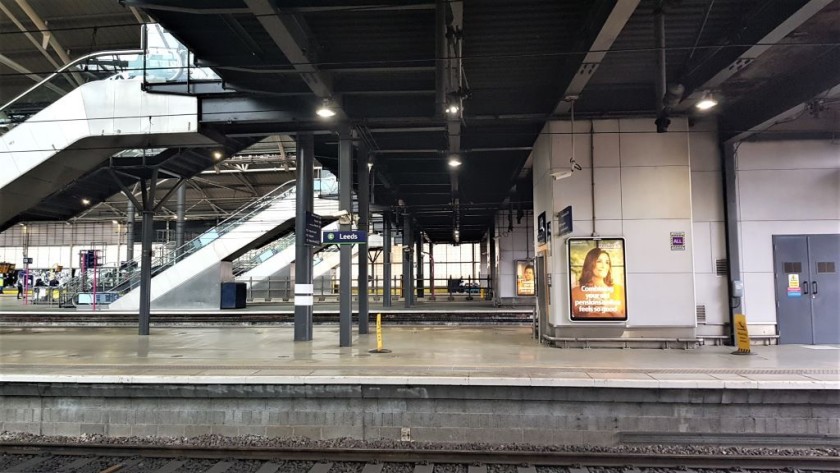
If your train arrives in Leeds at platforms (tracks) 1 – 8 when you alight from it, you will be on the same level as the main station concourse.
To access it all you have to do is walk through the main ticket gate line; though you’ll need to open the gates with your ticket, so don’t leave it on the train.
If your train arrives at platforms (tracks) 9 – 17, you will need to ascend up to the huge bridge which spans the station, in order to access the exits.
On one side of the bridge there are escalators and stairs, while on the other there are lifts (elevators).
From this bridge there are also escalators and elevators, which lead down to the ticket gates that give access to the main concourse and its exits to the city centre.
Questions Answered
ShowMeTheJourney has anticipated what questions are most often asked about taking trains to and from Leeds City station and answered them below.
If you can't find the information you are seeking, you can ask Conductor Sam - the new Q and A service.
Is there step-free access to and from the platforms / tracks?
Yes there is.
Platforms / tracks 1 - 8 are on the same level as the main concourse.
Though the access to and from platforms / tracks 9 - 17 is dependent on the availability of lifts / elevators. The bridge which spans the station is equipped with sets of lifts that connect the trains which use this part of the station, with the entrances, exits and the station facilities.
How to travel between Leeds station and the city centre
Leeds station is located in the south west corner of the city’s central area, but Leeds has no tram or metro, so heading off on foot, or taking a taxi, or a bus, are the only means of accessing destinations in the city centre.
However, Leeds city centre is comparatively compact and its main retail area, which is only a 5 – 8 min walk from the station is pedestrianised, so walking is the best means of accessing the heart of the city.
Victoria Square, the location of the Town Hall and Art Gallery, is on the opposite side of the city centre to Leeds station, but it can be reached on foot in only 10 – 15 minutes.
There are two exits from Leeds station on its city centre side, the more obvious exit on the newly extended main concourse leads out to New Station Street and this is where the main TAXI RANK is located
You can turn left OR right and walk down New Station Street to access the city centre, so it’s a good idea to work out the location of your final destination in the city, before your train arrives in Leeds, so that you’ll know which direction you should take.
In summary go to the left if you are heading to Victoria Square, which is where the city’s art gallery, library, town hall and The Henry Moore Institute are located.
Turn to the right if you’re heading to The Victorian Quarter or The Corn Exchange.
The alternative city side exit is on City Square, it is at the other end of the northern concourse, turn left on exiting the ticket gates and walk by the ticket desks.
How can tickets purchased for the local buses?
Both single journey and Day Saver tickets for local buses can be purchased from the driver when boarding, with most of the city's multiple bus operators able to accept contactless payment by debit card.
For an extended stay in the city and the surrounding area it can be worth downloading the M Card app.
On the app, single journey tickets cost a max of £2 - and the app can be simply tapped on the reader when boarding.
Are there cafes or restaurants available?
There are multiple food and drink outlets in Leeds station, most of which are located on the Northern concourse passage way - though the only option for a full meal service within the station is a Wetherspoons pub.
Though there are numerous cafes and restaurants within a five minute walk of Leeds City station.
On ShowMeTheJourneys holiday in Leeds the pre day trip by train stopover was at Laynes Cafe - a 3 min walk from the station, turn right at the main exit and follow the pavement around the corner to the left.
Are there left luggage facilities?
There is a facility managed by the Excess Baggage Company which is located by the Wellington Street end of the Northern Concourse passage way.
Storage space can be pre-booked online.
Does the station have a First Class lounge?
There is a lounge available for holders of First Class tickets to travel by LNER trains.
Departing by train:


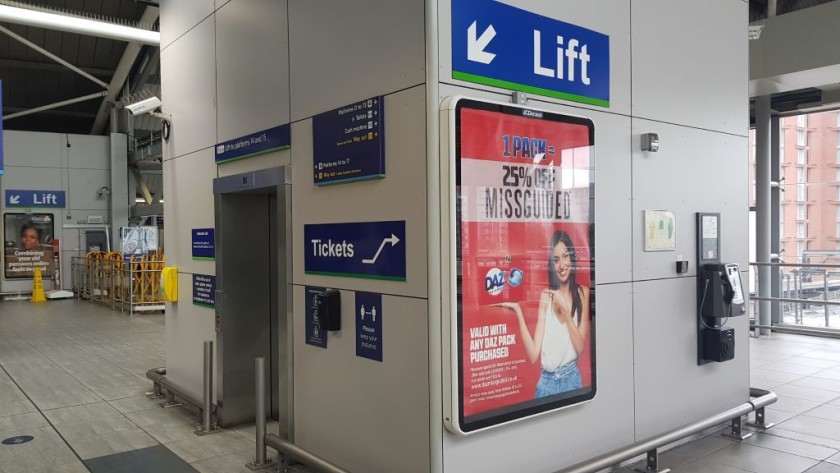
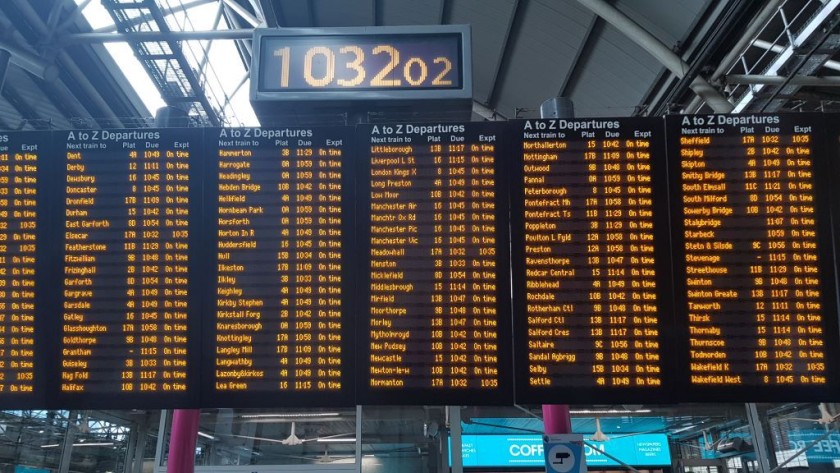
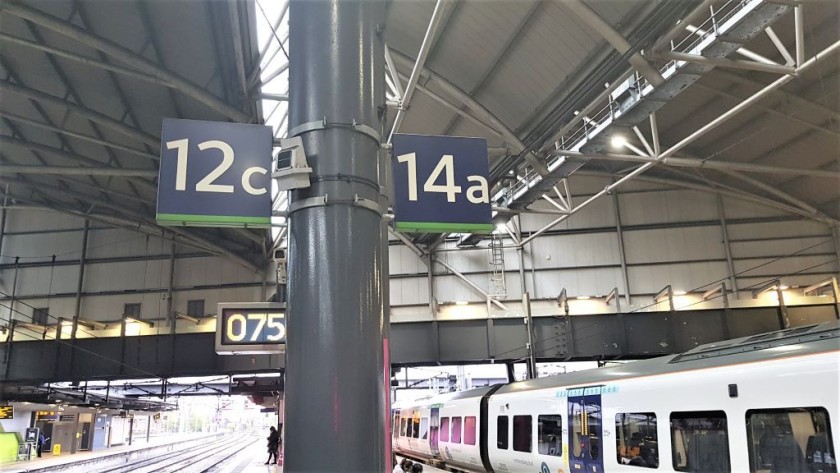
If you arrive at Leeds station in time to have something to eat or drink before your train departs, the best location in which to wait for a train, is the glorious Art-Deco creation that is the Northern Concourse.
It is off to the right of the main concourse, on the other side of the ticket desks and the LNER first class lounge – it houses information screens, so you can keep an eye on the train departure details.
On the departure screens many of the platforms are shown as a combination of numbers AND letters; 5C, 9D and 15A etc.
If your departure is leaving from such a specific platform (track) you need to keep this combination of numbers AND letters in mind as you make your way to your train.
Platform (track) 9A is at the opposite end of the station to platform 9D etc.
The ‘D’ platforms are furthest from the main concourse, so allow a minimum of three minutes to make your way to trains which leave from here, if you don’t want to hurry.
If your train is departing from any part of platforms (tracks) 9 – 17, you will need to make your way to it, by using the bridge which spans the station; it can be accessed by escalators and lifts (elevators).
Though the escalators which link the bridge to platforms (tracks) 9 – 17 only lead upwards, so the options for descending down to the trains are to use to the stairs or the elevators.
If you use the stairs to descend from this bridge, you will be on the B or C sections of the platforms (tracks); the A sections will then be behind you on the other side of the bridge and the D sections will be ahead of you, at the far end of the platform.
Train services summary:
The typical pattern of train departures from Leeds City station is:
By CrossCountry
- to Edinburgh via York, Darlington, Durham, Newcastle and Berwick upon-Tweed = up to 1 x train per hour ; 1 x train per day continues to Glasgow
- to Plymouth (some trains travel on to Penzance) via Sheffield, Derby, Birmingham, Cheltenham, Bristol, Taunton, Exeter and Newton Abbot = up to 1 x train per hour
- to Newport and Cardiff = 1 x train per day
By LNER:
- to London King's Cross via Peterborough = 2 x trains per hour
- to Aberdeen via Leuchars and Dundee = 1 x train per day
By Northern:
- to Blackpool North via Halifax, Hebden Bridge, Burnley and Preston = 1 x train per hour
- to Bradford Interchange = up to 5 x trains per hour
- to Carlisle via Settle, Horton-in-Ribblesdale, Ribblehead, Dent, Garsdale, Kirkby Stephen and Appleby = up to 8 x trains per day
- to Chester = via Halifax, Hebden Bridge and Manchester Victoria = 1 x train per hour
- to Harrogate = 2 x trains per hour
- to Hull = 1 x train per hour
- to Ilkley = 2 x trains per hour
- to Lincoln = 1 x train per hour on Monday to Saturday
- to Morecambe via Carnforth and Lancaster = 4 to 6 x trains per day
- to Nottingham = 1 x train per hour
- to Sheffield = up to 3 x trains per hour operated by Northern
- to Skipton via Saltaire and Keighley = 2 or 3 x trains per hour
- to York = 2 x trains per hour
By TransPennine Express
- to Hull = 1 x train per hour
- to Liverpool = 2 x trains per hour
- to Manchester Victoria](/train-travel-info/countries/great-britain/cities/manchester/rail-stations/manchester-victoria/) = 4 x fast trains per hour via Huddersfield
- to Manchester Airport via Manchester Piccadilly = 1 x train per hour
- to Newcastle via Darlington and Durham = 1 x train per hour
- to Redcar via Thirsk, Northallerton and Middlesbrough = 1 x train per hour
- to Scarborough = 1 x train per hour
- to York = 3 x trains per hour
The train services call at additional stations to those listed above.
Note that many locations are served by more than one company, so cumulatively the service from Leeds per hour is;
- to Hull = 2 x trains per hour
- to Newcastle = 2 x trains per hour
- York = 6 x trains per jour
Live departures can be looked up here
Journeys
# Jump to a directionDirections
Journeys to Leeds City
Jump to directionsEdinburgh to Leeds by train
Glasgow to Leeds by train
London to Leeds by train
Manchester to Leeds by train
This second version of ShowMeTheJourney is exciting and new, so we are genuinely thrilled that you are here and reading this, but we also need your help.
We’re striving not to let anything get in the way of providing the most useful service possible, hence a facility has been set up with DonorBox which can be used to support the running costs and make improvements.
Instead of advertising or paywalls, your financial support will make a positive difference to delivering an enhanced service, as there’s a lot of ideas which we want to make happen.
So if you have found the info provided here to be useful, please consider saying thank you.

This is one of more than 100 train travel guides available on ShowMeTheJourney, which will make it easier to take the train journeys you want or need to make. As always, all images were captured on trips taken by ShowMeTheJourney.




